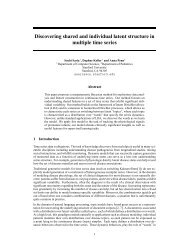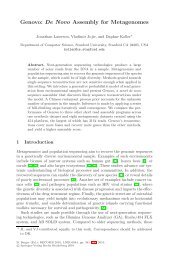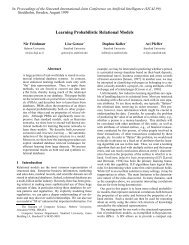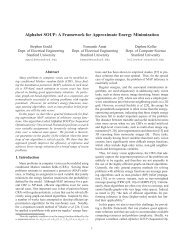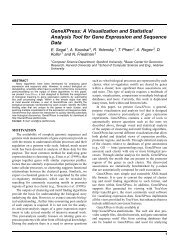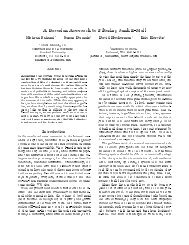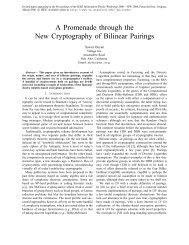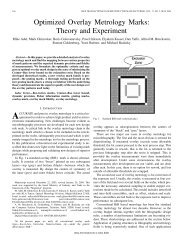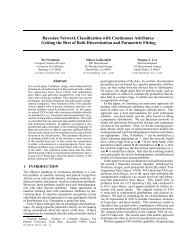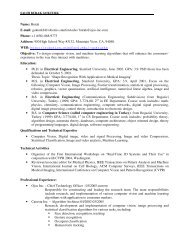Compile-time Loop Splitting for Distributed Memory ... - Stanford AI Lab
Compile-time Loop Splitting for Distributed Memory ... - Stanford AI Lab
Compile-time Loop Splitting for Distributed Memory ... - Stanford AI Lab
Create successful ePaper yourself
Turn your PDF publications into a flip-book with our unique Google optimized e-Paper software.
J=100<br />
I=100<br />
0 1<br />
2 3<br />
A<br />
0<br />
1<br />
2<br />
3<br />
B<br />
0 1 2 3<br />
Figure 2-4: Three examples of data partitioning <strong>for</strong> a 100x100 array on four processors:<br />
(a) blocking, (b) striping by rows, and (c) striping by columns. The numbers designate<br />
assignment of the array portions to the virtual processors.<br />
2.2.2 Data Partitioning<br />
While the task is divided among processors <strong>for</strong> all parallel machines, the data of a program<br />
is divided only on a distributed memory multiprocessor. In a distributed memory system,<br />
every memory address is local to some processor node; and every processor node has its<br />
own piece of memory, from which all nodes may read and to which all may write. The data<br />
structure relevant to data partitioning is the array and is distributed among the memories<br />
without duplication. Figure 2-4 shows several data distributions <strong>for</strong> a 2-D array, each with<br />
a different mapping of the array onto the processor memories.<br />
Figure 2-4 helps to define more terms. First, the data spread is the dimension length<br />
of the data portion located in a processor’s memory. In Figure 2-4a both the � ����—�and<br />
� ����—�are 50 array elements each; in Figure 2-4b, � ����—�is 100 elements and � ����—�<br />
is 25; and in Figure 2-4c � ����—�is 25 elements and � ����—�is 100. Second, the virtual<br />
network is the arrangement of the virtual processors on which alignment maps the data.<br />
This virtual network is then mapped onto the (possibly different) real network of physical<br />
processors by a procedure called placement. The dimensions of the virtual network play an<br />
important role in array referencing (explained in Section 2.5) and are called � ���, where<br />
�is the dimension name. In Figure 2-4a, both the � ��� and � ��� are 2 virtual<br />
processors; in Figure 2-4b � ��� is 1 and � ��� is 4; and in Figure 2-4c � ��� is 4<br />
processors and � ��� is 1.<br />
Like task partitioning, the ideal data partitioning distributes equal amounts of data<br />
18<br />
C




